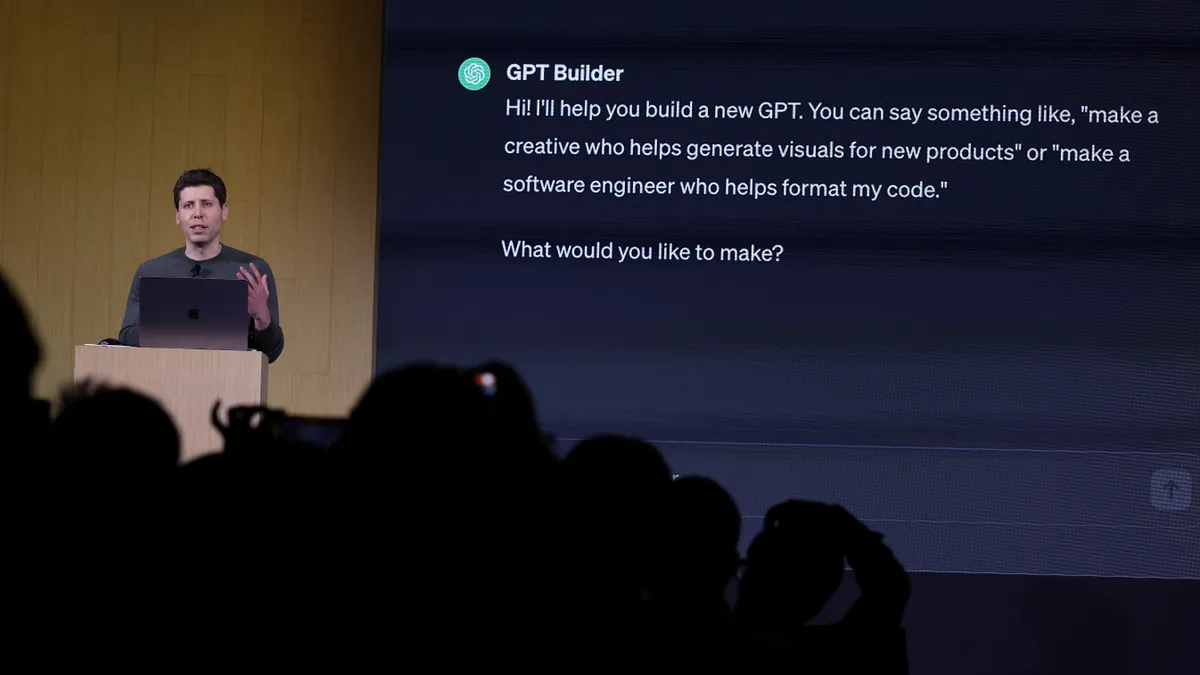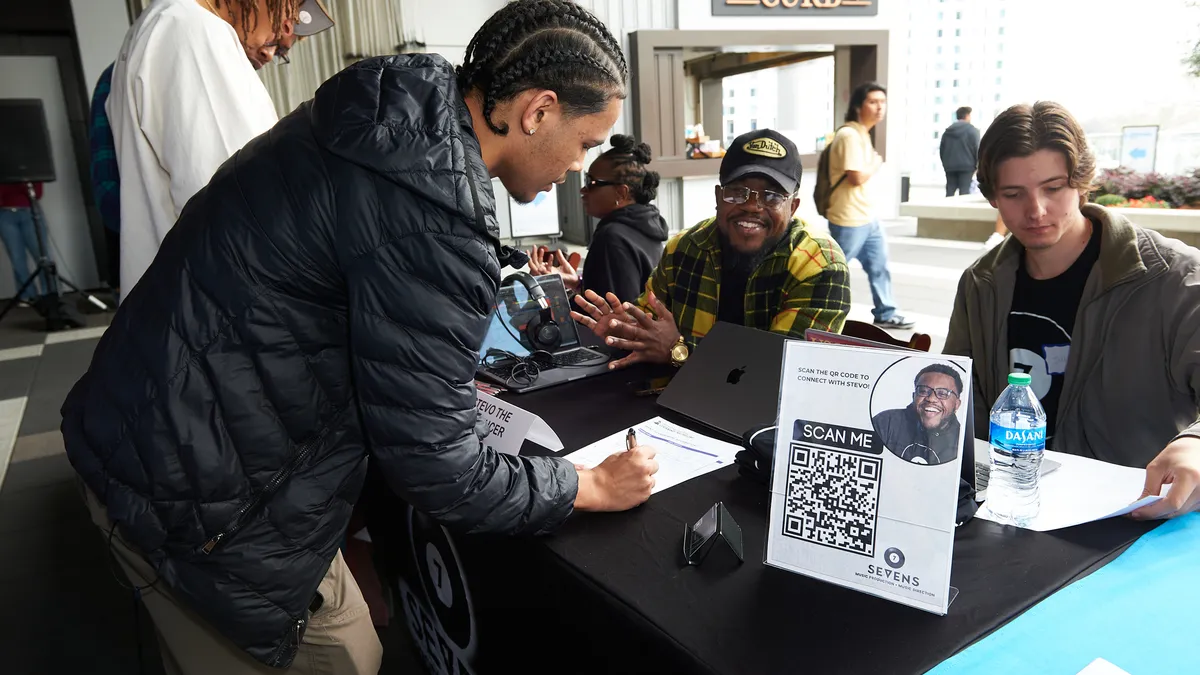"Social learning" may well be L&D's 2019 buzzword. It involves the process of learning from peers, and it's changing the way learning professionals deliver training.
The concept is founded on the principle that we tend to learn best with others, according to Charlie Chung, senior director solutions consulting at NovoEd. "It is based on the idea developed by Stanford psychologist Albert Bandura that we learn behaviors through observation and imitation," he told HR Dive via email.
It can involve learning from peers, mentors and others — sometimes through formal training but mostly in informal opportunities — and the results can be impressive, according to experts. Social learning boosts knowledge retention, according to Matt Powell, product marketing manager at Docebo; when learning happens during the flow of work, it's more meaningful and the lessons are more effective, he said.
Why now?
Social learning isn't a new idea. "On-the-job training from experts or more experienced colleagues is a form of social learning that has been taking place in most workplaces for centuries," Kiara Graham, learning strategy consultant at D2L, told HR Dive in an email.
There's a renewed interest today, perhaps due to today's changing skills demands, Chung said. Employees still turn to colleagues when they need critical learning because it's the most effective option, Powell explained. But with today's digital environment, social learning will have to look different.
After all, we experience fewer face-to-face encounters today, Graham said. But employees expect virtual capability for workplace learning: "We expect to learn from an expert on another continent just as easily as from the person in the next cubicle."
Employers are allowing employees to work anywhere, on any device, and learning must follow, Leo Blankenship, vice president, learning offerings leader at Conduent told HR Dive. Some employers are already doing so, incorporating "the right mix of next-generation learning solutions delivered in a variety of formats."
Why is social learning important?
In addition to providing good knowledge retention rates, social learning can be a boon for soft skills like leadership, communication, innovation and design thinking, Chung said. Social interaction and collaboration are often required to shift behaviors and achieve growth.
Graham agreed: "Soft skills are becoming increasingly job-critical skills," she said, "and social learning (such as coaching, mentorship, and receiving feedback from managers, experts and peers) is critical to developing soft skills."
"In a social learning experience, learners don't just consume content, they connect with each other in discussion and collaboration around the learning," Chung explained. "By sharing feedback, perspective, and expertise learners engage on a deeper level with the subject matter and this results in sustained impact."
Social learning also can bridge the gap between what management thinks staff need and what employees want to develop, Powell said. "By empowering employees to customize a training or discussion based on the scenarios and skills gaps they want to address, employers have a huge opportunity to provide more content relative to every day, in the flow of work challenges that ultimately enhance employee development, retention, and engagement."
How can organizations implement social learning?
Social learning may sometimes occur organically, but it can't be left to chance.
"Social learning is likely already happening at your organization in face-to-face interactions on a daily basis," Graham said, "but with an increasingly global (and remote) workforce, organizations should leverage social learning technologies to connect employees who may have limited opportunities to learn from their colleagues in an office setting."
Challenges will arise, of course, but employers can look to tech — some of which they may already have. Learning pros can track mentorships, for example, Chung said. Tools that enable peer review can work, said Powell, as well as those that encourage content sharing. These give employees ownership of their training and encourages teaching. "Especially in cases where managers or executives can't always be present, fostering this type of learning culture ensures that learning is continuous and accessible regardless of the format."
What are the downsides?
While social learning offers employees the chance to engage and network with peers, there is the potential for the spread of misinformation as well, Chung warned. Employers can minimize risk by ensuring there's a "clear, important purpose for utilizing social learning, and that there is sufficient expertise among instructors, facilitators, mentors, subject matter experts, and managers to safeguard for quality and appropriateness, and intervene if necessary," he suggested.
Business also can prevent misinformation from spreading with tools that support social learning but that also provide the ability to monitor and curate information. With the right experts in place to guide discussions and answer questions, social learning can do more than just provide information; it can become a marketplace for ideas and networking opportunities.


















